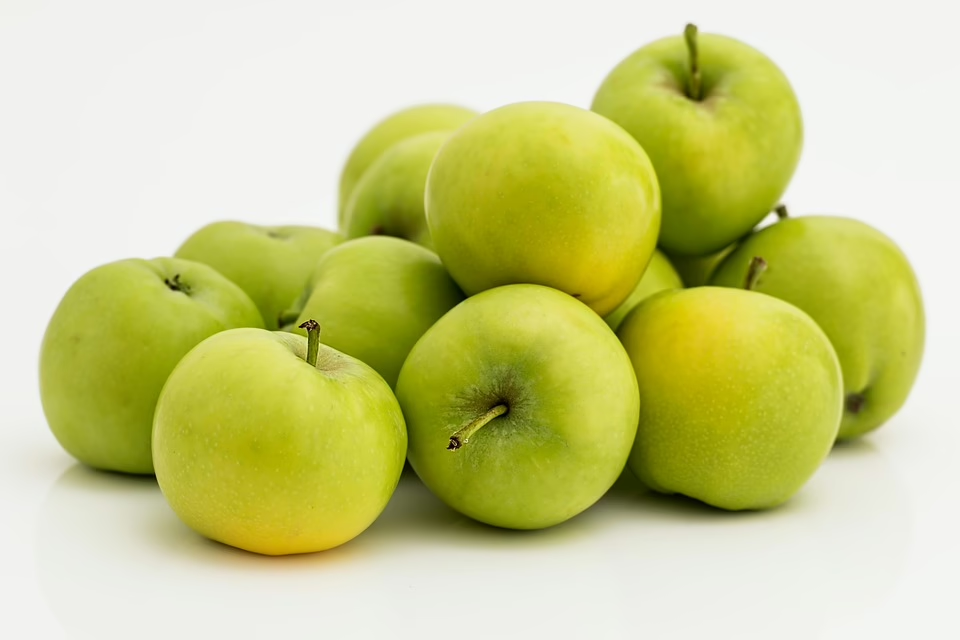Taste the Rainbow: Exploring Nutritional Benefits through Food Photos
Introduction
In today’s digital age, food photography has transcended mere aesthetics. With the rise of social media platforms, vibrant food images have captivated audiences and ignited a renewed interest in nutrition and health. This article delves into the concept of “tasting the rainbow,” emphasizing the nutritional benefits of consuming a diverse array of colorful foods. By exploring the health implications through enticing food photos, we can better understand how the visual appeal of food can encourage healthy eating habits and vibrant living.
The Concept of “Eating the Rainbow”
The phrase “eating the rainbow” refers to the practice of including a variety of fruits and vegetables in one’s diet, each offering unique nutrients and health benefits. The colors of fruits and vegetables not only make meals visually appealing but also indicate the presence of different phytonutrients and vitamins.
Red Foods
Red fruits and vegetables, including tomatoes, strawberries, and bell peppers, are rich in antioxidants like lycopene and anthocyanins. These compounds are associated with reduced risk of heart disease, certain cancers, and age-related eye conditions. For instance, the vibrant red of a ripe tomato is a signal of its high lycopene content, which has been linked to lower prostate cancer risk[^1].
Photography Tip: Capture red foods against contrasting backgrounds to enhance their appeal, bringing out their natural sheen.
Orange and Yellow Foods
Orange and yellow foods, such as carrots, sweet potatoes, and citrus fruits, are excellent sources of vitamin C and beta-carotene. Beta-carotene, the pigment that gives carrots their vibrant color, is converted into vitamin A in the body, supporting eye health and immune function[^2]. In addition, foods like oranges and lemons are known for their high vitamin C content, essential for collagen production and skin health.
Photography Tip: Use natural sunlight to illuminate these foods, emphasizing their warm hues and textures.
Green Foods
Green vegetables like spinach, broccoli, and kale are powerhouses of nutrition. Rich in vitamins K, C, and E, as well as a variety of minerals, greens play a crucial role in bone health, blood clotting, and immune response[^3]. Their deep green color is indicative of the chlorophyll content, which is believed to help detoxify the body and support digestive health.
Photography Tip: Present green foods in a minimalist setting to make their lush colors pop, using white or neutral-colored plates.
Blue and Purple Foods
Blue and purple foods such as blueberries, eggplant, and purple cabbage are especially rich in antioxidants called anthocyanins. These compounds are known for their anti-inflammatory and anti-aging properties[^4]. Blueberries, for instance, have been shown to improve cognitive function and cardiovascular health, making them a vital addition to the diet.
Photography Tip: Use a dark background to create a dramatic contrast, allowing the deep colors of blue and purple foods to stand out.
White and Brown Foods
While often overlooked, white and brown foods also deserve recognition for their nutritional contributions. Foods like garlic, onions, and mushrooms are not only versatile in cooking but are also rich in immune-boosting compounds like allicin and selenium[^5]. Potatoes and whole grains provide essential fiber, promoting digestive health.
Photography Tip: Incorporate textures and layering to add depth to images of these foods, showcasing their unique shapes and forms.
The Psychological Impact of Food Photography
The aesthetic quality of food images plays a significant role in how people perceive and choose their foods. Research has indicated that visually appealing meals can stimulate appetite and can be a powerful motivator for healthier eating choices[^6]. When we see beautifully arranged plates on social media, it not only makes us crave those foods but also encourages us to replicate them.
The Influence of Social Media
Platforms like Instagram and Pinterest have turned food photography into a cultural phenomenon. Users are inundated with colorful and artfully presented meals, fueling a desire to try new recipes and explore different flavors. This has led to the democratization of food trends, allowing anyone with a smartphone to share their culinary creations and inspire others[^7].
Mindful Eating
Food photography can also foster mindfulness in eating habits. By taking the time to create visually pleasing dishes, individuals may become more conscious of the foods they consume. Mindful eating, combined with the visual appeal of meals, can enhance the dining experience and promote healthier choices[^8].
Impacts on Health and Nutrition
The nutritional benefits of colorful foods cannot be overstated. A diet rich in fruits and vegetables has been linked to numerous health advantages, including lower instances of chronic diseases, improved mental health, and enhanced longevity[^9].
Chronic Disease Prevention
Research shows that individuals who consume a diet high in fruits and vegetables are less likely to develop chronic diseases such as obesity, diabetes, and cardiovascular diseases[^10]. The nutrients found in colorful foods, including fiber, vitamins, and minerals, contribute to overall health and well-being.
Improved Mental Health
The link between diet and mental health has gained significant attention in recent years. Consuming a variety of colorful foods has been correlated with reduced symptoms of depression and anxiety[^11]. The antioxidants present in fruits and vegetables can combat oxidative stress, which is often implicated in mental health disorders.
Enhanced Longevity
A study published in the Journal of Clinical Nutrition highlighted that individuals who consume a wide range of fruits and vegetables tend to live longer. This can be attributed to the combined effects of various phytochemicals and nutrients that protect against chronic disease and support overall health[^12].
Crafting a Colorful Plate
Creating a colorful plate is not only about aesthetic appeal but also about ensuring a balanced intake of nutrients. The following tips can help in crafting nutritious, vibrant meals.
Incorporate Variety
Aim to include at least three different colors on your plate at every meal. This can be achieved by mixing and matching different fruits and vegetables. For example, a salad with spinach, cherry tomatoes, and sliced bell peppers offers a balance of nutrients and visual appeal.
Experiment with Cooking Methods
Different cooking methods can enhance the colors and flavors of fruits and vegetables. Grilling, roasting, and sautéing can bring out the natural sweetness of foods while retaining their nutritional value. Additionally, raw preparations such as salads or smoothies can preserve maximum nutrients.
Mindful Pairing
Pairing colorful foods with complementary ingredients can elevate both taste and nutrition. For example, adding nuts or seeds to a fruit salad not only adds crunch but also provides healthy fats and protein, enhancing satiety. Similarly, drizzling olive oil on roasted vegetables can improve the absorption of fat-soluble vitamins.
The Role of Food Photography in Meal Planning
Food photography can be a powerful tool for meal planning, making it easier to visualize meals and stay organized throughout the week. Here are some effective strategies for incorporating food photography into meal planning.
Visual Meal Prep
Before prepping meals for the week, take vibrant photographs of colorful ingredients. This visual reference can serve as inspiration and motivation when deciding what to prepare. Posting them on platforms like Instagram or creating a private Pinterest board can keep you engaged and excited about your meals.
Recipe Development
Taking photographs of recipes as they are developed can help track what works and what doesn’t. Additionally, visually documenting meal successes creates a personal cookbook that can be revisited for future meals.
Creating a Seasonal Ingredient Calendar
Photographing seasonal fruits and vegetables can illustrate what’s fresh and available throughout the year, guiding your meal planning. This method encourages the consumption of fresh produce while promoting sustainability.
Culinary Culture and Diversity
Exploring the culinary traditions of various cultures can provide further insight into the benefits of colorful eating. Different cuisines often emphasize diverse ingredients that showcase the beauty and nutritional value of local produce.
Mediterranean Diet
Rich in fruits, vegetables, whole grains, and healthy fats, the Mediterranean diet is renowned for its health benefits. The vibrant variety of ingredients used in this dietary approach includes everything from leafy greens to bright citrus fruits, making meals both colorful and nourishing[^13].
Asian Cuisine
Asian cuisine offers a plethora of colorful dishes, often packed with vegetables, herbs, and spices. Stir-fries, for example, incorporate various colorful ingredients, ensuring a vibrant plate that boasts diverse nutrients.
Latin American Flavors
From tropical fruits to hearty legumes, Latin American dishes highlight colorful foods rich in fiber and vitamins. Dishes such as ceviche or colorful bean salads celebrate the abundance of fresh produce.
Conclusion
“Taste the rainbow” is not merely a catchy slogan; it serves as a crucial reminder of the importance of variety and color in our diets. Engaging with food photography allows us to explore the nutritional benefits of colorful foods while igniting creativity and inspiration in meal preparations. By embracing the visual aspects of food, we can promote healthier eating habits and appreciate the beauty of nature’s bounty.
References
[^1]: American Cancer Society. (2022). Tomatoes and Health: Nutrition Information.[^2]: National Institutes of Health. (2020). Carotenoids and Health.
[^3]: Harvard T.H. Chan School of Public Health. (2021). The Nutrition Source: Leafy Greens.
[^4]: Wang, L. et al. (2019). Anthocyanins and cognitive function: a systematic review. Nutrients.
[^5]: Tsugane, S. et al. (2018). Garlic Consumption and Health: A Review. Food & Nutrition Research.
[^6]: Rios, D. (2021). The Psychology of Food Photography. Social Media Studies.
[^7]: Kharas, M. (2020). Food, Photography, and Social Media: Cultural Trends. Journal of Culinary Arts.
[^8]: Lappalainen, R. (2019). Mindful Eating: The Power of Food Photography. Journal of Nutrition Education.
[^9]: World Health Organization. (2022). Fruit and Vegetable Intake and Health.
[^10]: Mozaffarian, D. et al. (2018). Changes in Diet and Cardiovascular Disease Outcomes: A Meta-Analysis. Circulation.
[^11]: Jacka, F.N. et al. (2020). Nutritional Psychiatry: A Review of the Evidence. Psychological Medicine.
[^12]: Zhang, H. et al. (2021). Longitudinal Associations between Fruit and Vegetable Intake and Mortality among U.S. Adults. Journal of Clinical Nutrition.
[^13]: Estruch, R. et al. (2018). Evidence of the Mediterranean Diet’s Efficacy: A Prospective Cohort Study. New England Journal of Medicine.
This article offers an overview of the vibrancy and significance of colorful foods through the lens of photography, emphasizing the nutritional benefits while encouraging a more mindful and varied approach to dietary choices. Without a doubt, the world of food is not just about taste—it’s about how color and presentation can inspire us to make healthier choices.


























Add Comment